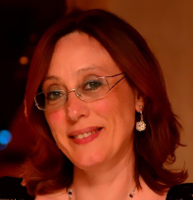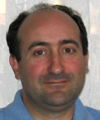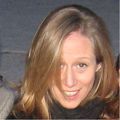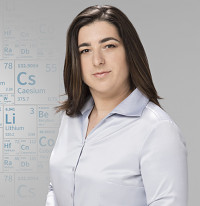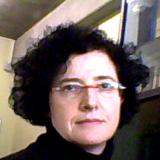Studying at the University of Verona
Here you can find information on the organisational aspects of the Programme, lecture timetables, learning activities and useful contact details for your time at the University, from enrolment to graduation.
Academic calendar
The academic calendar shows the deadlines and scheduled events that are relevant to students, teaching and technical-administrative staff of the University. Public holidays and University closures are also indicated. The academic year normally begins on 1 October each year and ends on 30 September of the following year.
Course calendar
The Academic Calendar sets out the degree programme lecture and exam timetables, as well as the relevant university closure dates..
| Period | From | To |
|---|---|---|
| 1° Semestre | Oct 1, 2023 | Jan 31, 2024 |
| 2° Semestre | Mar 1, 2024 | Jun 30, 2024 |
Exam calendar
To view all the exam sessions available, please use the Exam dashboard on ESSE3. If you forgot your login details or have problems logging in, please contact the relevant IT HelpDesk, or check the login details recovery web page.
Should you have any doubts or questions, please check the Enrollment FAQs
Academic staff
 chiara.nardon@univr.it
chiara.nardon@univr.it
Study Plan
The Study Plan includes all modules, teaching and learning activities that each student will need to undertake during their time at the University.
Please select your Study Plan based on your enrollment year.
1° Year
| Modules | Credits | TAF | SSD |
|---|
2° Year It will be activated in the A.Y. 2024/2025
| Modules | Credits | TAF | SSD |
|---|
3° Year It will be activated in the A.Y. 2025/2026
| Modules | Credits | TAF | SSD |
|---|
4° Year It will be activated in the A.Y. 2026/2027
| Modules | Credits | TAF | SSD |
|---|
5° Year It will be activated in the A.Y. 2027/2028
| Modules | Credits | TAF | SSD |
|---|
| Modules | Credits | TAF | SSD |
|---|
| Modules | Credits | TAF | SSD |
|---|
| Modules | Credits | TAF | SSD |
|---|
| Modules | Credits | TAF | SSD |
|---|
| Modules | Credits | TAF | SSD |
|---|
| Modules | Credits | TAF | SSD |
|---|
Legend | Type of training activity (TTA)
TAF (Type of Educational Activity) All courses and activities are classified into different types of educational activities, indicated by a letter.
Human Physiology (2024/2025)
Teaching code
4S01629
Academic staff
Coordinator
Credits
6
Language
Italian
Scientific Disciplinary Sector (SSD)
BIO/09 - PHYSIOLOGY
Period
FARMACIA 1° semestre dal Oct 1, 2024 al Dec 20, 2024.
Courses Single
Authorized
Learning objectives
The goal of the course is: to understand the physic-chemical mechanisms of basic cellular processes: resting membrane polarization, action potential, synaptic communication, muscular contraction, stimuli transduction; to know the function of the cardiovascular and respiratory systems, their regulation mechanisms and coordination in specific tasks like the homeostasis of the internal environment, the regulation of cardiac output, arterial pressure, respiration and acid-base balance, and muscular exercise; to know the role of the kidney in ensuring balance of the body for water and solutes, as well as acid-base balance; to know the basal metabolism and activity metabolism, and the body requirements in terms of calories and specific nutrients, including the regulatory role of the nervous system and of various hormones; to know the physiology of the digestive tract, including motility, secretion, digestion, and absorption; to know the endocrine glands and their control by the hypothalamus-hypophysis; to know the structure and function of the sensory and motor systems and their centers in the brain; to know the structure and mechanisms underlying the sleep-wake cycle; to know the neurophysiological basis of higher functions and the molecular and cellular mechanisms of neuronal plasticity.
Prerequisites and basic notions
In order to understand the course of Physiology, one must have first assimilated the basic notions of Chemistry, Physics, Biology, Anatomy and Biochemistry, in particular:
• Chemistry: the concept of pH, diffusion, molarity, osmolarity and osmotic/oncotic pressure;
• Physics: electro-physics, physics of gasses, surface tension, Laplace's law, basic notions of mechanics, statics and dynamics of fluids;
• Biology: biophysical characteristics of the cell membrane, structure of the cell and cell organelles, the genetic code with transcription and translation, protein synthesis, membrane receptors, intracellular signals and second messengers;
• Anatomy: the basic anatomical characteristics of the main systems and organs of the human body, such as the nervous, cardio-respiratory and renal systems;
• Biochemistry: the main metabolic pathways, enzymatic kinetics and mitochondrial enzymes, oxidative phosphorylation.
Program
• Principles of biophysics and cellular physiology: mechanisms of transport at the membrane level, resting membrane potential, postsynaptic potentials and action potential.
• Synapses: chemical and electrical, excitatory and inhibitory, neurotransmitters, neuromodulators and membrane receptors.
• Skeletal Muscle: sarcomere structure, cross-bridge cycle, excitation-contraction coupling, isometric and isotonic contraction, frequency-tension and length-tension relationships.
• Motor system: motor neurons and motor units. Voluntary and reflex motor activity. Role of the cortex, basal ganglia and cerebellum.
• Sense systems: receptors, transduction processes, central processing. Somatoesthesia and pain: structures and functions. Hearing and the sense of balance, structures and functions. Vision: notes on optics, transduction in the retina, central pathways, organization of the visual cortex.
• Autonomic nervous system and endocrine system: organization and role in the control of metabolism.
• Respiratory system: organization of gas conduction and exchange systems. Pressure gradients and air flows in inspiration and expiration. Mechanics of ventilation, volumes and lung capacity. Transport of gases in the blood. Nervous and chemical control of ventilation.
• Cardiovascular system: cardiac cycle, cardiac output and role of the autonomic nervous system. Circulation and regulation of blood pressure and tissue exchange.
• Renal system: renal filtration and regulatory mechanisms. Tubular reabsorption and secretion. Mechanisms of regulation of hydro-electrolyte homeostasis and regulation of acid-base balance,
• Gastrointestinal system: digestion and absorption. Hepatobiliary function. Salivary and pancreatic glands.
Bibliography
Didactic methods
Teaching will be delivered through lectures.
Learning assessment procedures
Oral examination. The student will be examined on each of the main topics. There are no mid-way tests planned.
Evaluation criteria
Knowledge of the topics detailed in the course program, ability to present using the technical terms of the discipline, ability to connect multiple topics of the discipline and ability to rework the knowledge acquired in a personal and critical way.
Criteria for the composition of the final grade
The exam will take place in oral form and in the presence of the two course teachers in the same room. At the end of the interview the teachers will provide a final evaluation out of thirty; arithmetic mean of the two grades proposed by the teachers. Each grade must be sufficient for the final evaluation.
Exam language
Italiano
Type D and Type F activities
Modules not yet included
Career prospects
Module/Programme news
News for students
There you will find information, resources and services useful during your time at the University (Student’s exam record, your study plan on ESSE3, Distance Learning courses, university email account, office forms, administrative procedures, etc.). You can log into MyUnivr with your GIA login details: only in this way will you be able to receive notification of all the notices from your teachers and your secretariat via email and soon also via the Univr app.

 045802 7955
045802 7955
